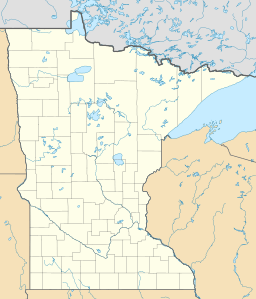Stocking Lake (Wadena County, Minnesota) facts for kids
Quick facts for kids Stocking Lake |
|
|---|---|
| Location | Wadena County, Minnesota |
| Coordinates | 46°45.75′N 95°4′W / 46.76250°N 95.067°W |
| Type | lake |
Stocking Lake is a beautiful lake located in Wadena County, which is part of the U.S. state of Minnesota. This lake is known for its unique shape, which looks a lot like a stocking. That's how it got its interesting name!
Lakes like Stocking Lake are important natural features. They provide homes for many plants and animals. They also offer fun activities for people who live nearby or visit the area.
Contents
What is Stocking Lake?
Stocking Lake is a freshwater body of water. It is found in the central part of Minnesota. The lake is a natural formation, meaning it was not created by people. Its shape is quite distinctive, resembling a sock or stocking. This makes it easy to remember and gives it a special identity.
Where is Stocking Lake Located?
Stocking Lake is situated in Wadena County, Minnesota. Wadena County is in the west-central part of Minnesota. The area around the lake is often covered with forests and other natural landscapes. This makes it a peaceful spot for nature lovers. The exact coordinates of the lake are 46 degrees, 45.75 minutes North latitude and 95 degrees, 4 minutes West longitude. These coordinates help pinpoint its location on a map.
Why is it Called Stocking Lake?
The name "Stocking Lake" comes from its unusual outline. If you look at a map of the lake, you might notice it has a shape similar to a stocking. This is a common way for natural features to get their names. People often name places based on what they look like. It helps to describe them easily.
Life in and Around the Lake
Lakes like Stocking Lake are busy ecosystems. An ecosystem is a community of living things interacting with their environment. Many different types of plants and animals call the lake home. These include fish, birds, insects, and various water plants.
Aquatic Plants and Animals
The water in Stocking Lake supports many forms of life. Different kinds of fish might live in its waters. These could include species common to Minnesota lakes. Examples are walleye, northern pike, or bass. These fish rely on the lake for food and shelter.
Small creatures like insects and tiny organisms also thrive here. These are important parts of the food chain. They provide food for larger animals. Water plants, such as water lilies or cattails, grow along the lake's edges. They offer hiding spots for fish and insects. They also help keep the water clean.
Wildlife Near the Shore
The areas around Stocking Lake are also full of life. Birds like ducks, geese, and herons might visit the lake. They come to feed on fish or insects. Mammals such as deer, raccoons, or foxes could live in the nearby forests. They might come to the lake to drink water. The lake provides a vital water source for all these animals.
Importance of Lakes
Lakes are very important for many reasons. They are not just pretty places. They play a big role in our environment and for people.
Environmental Benefits
Lakes help keep our planet healthy. They store fresh water, which is essential for all living things. They also help control floods by holding excess water. Lakes can improve air quality by supporting plants that produce oxygen. They also help regulate local temperatures. This means they can make the area around them cooler in summer.
Recreational Activities
Stocking Lake, like many lakes, offers opportunities for fun. People can enjoy activities such as fishing. It's a popular pastime for many. Boating, kayaking, or canoeing are also common. These activities allow people to explore the lake. Swimming is another way to enjoy the water during warmer months. These activities help people connect with nature. They also provide exercise and relaxation.
Protecting Our Lakes
It is very important to protect lakes like Stocking Lake. Pollution from litter or chemicals can harm the lake's ecosystem. Overfishing can reduce fish populations. Protecting the lake means keeping its water clean. It also means respecting the wildlife that lives there. Everyone can help by not littering and being mindful of their actions near the water. This ensures the lake remains healthy for future generations.


